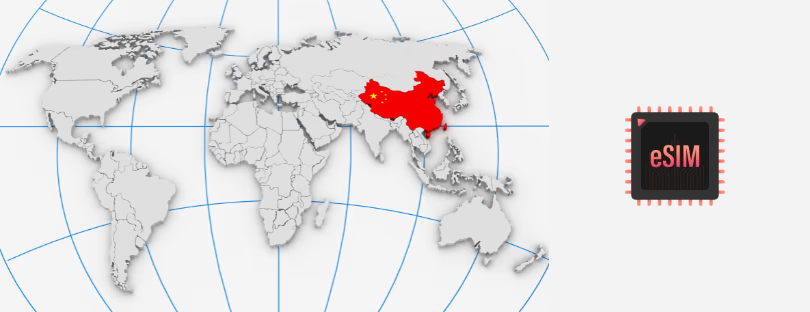
Top 10 eSIM Tips for Frequent Travelers in 2025
Let’s be real—traveling is supposed to be freeing, not frustrating. But if you’ve ever landed in a new country, opened your phone, and watched the dreaded “No Service” message pop up—or worse, gotten hit with a surprise €50 roaming fee—you know the sting.
That’s why eSIMs are a game-changer… but only if you use them wisely.
This isn’t your average “just install an eSIM” list. These are the real, battle-tested eSIM hacks that road warriors, digital nomads, and business globetrotters like you swear by. If you’re hopping between time zones more often than your friends change their Netflix passwords, this one’s for you.
1. Use One Phone, Multiple Personas
Pain point: Constant SIM-swapping and juggling numbers.
With eSIM, your phone can hold several profiles at once. So if you’re doing business in Germany but want to keep your US number for WhatsApp or calls back home—guess what? You don’t have to choose.
👉 Hack: Install your travel eSIM as a secondary line, and keep your main line on standby (or data-only mode) for authentication, banking, or personal use. Dual identity, one device. No more missed codes or login hell.
2. Don’t Buy at the Airport. Ever.
Pain point: Overpriced tourist traps and bad coverage.
eSIMs are supposed to free you from hunting down SIM card kiosks. But many travelers still download them at the airport—and pay the price. Literally.
👉 Hack: Research and install your eSIM before your trip. Use Wi-Fi at home or hotel. Bonus: Pre-installation means you can test activation and avoid that awkward moment in Arrivals when nothing loads.
3. Stack eSIMs Like a Pro
Pain point: Running out of data mid-trip or mid-meeting.
Most people don’t know this, but you can stack multiple eSIMs in your phone and switch between them. It’s like having spare batteries for your internet.
👉 Hack: Buy two plans in advance—one for backup. Use a daily or weekly plan first (cheap!), and keep a second one loaded just in case. Instant failover = no connectivity panic in the middle of nowhere.
4. Use Country-Specific eSIMs Over “Global” Ones (Most of the Time)
Pain point: Paying too much for coverage you don’t use.
Global eSIMs sound amazing—but they often charge a premium and offer weaker coverage.
👉 Hack: If you’re going to one country (or even two neighboring ones), country-specific or regional eSIMs are usually faster, cheaper, and more reliable. Save the global ones for multi-continent trips or emergencies.
5. Check for Throttling Before You Buy
Pain point: Data feels slow even when it’s “unlimited.”
Unlimited doesn’t mean fast. Some providers cap speeds after a few GBs, turning your phone into a potato during Zoom calls or Google Maps navigation.
👉 Hack: Always check the fine print: look for keywords like “throttling,” “FUP” (Fair Usage Policy), or “reduced speed after X GB.” Then compare across providers. Some eSIM marketplaces even highlight this now.
6. Use Airalo/Airhub for Price Shopping—But Don’t Blindly Buy
Pain point: eSIM fatigue—too many brands, too many promises.
Airalo, Airhub, and similar platforms are great for comparing prices. But here’s the catch: Not all eSIMs on marketplaces are created equal. Some are resellers of resellers.
👉 Hack: Use platforms as price discovery tools, then check the provider’s direct website or user reviews (especially Reddit or NomadList). Sometimes buying direct gets you better customer service or promo codes.
7. Make Use of Referral Codes and Coupons
Pain point: You’re overpaying, quietly.
Why pay €10 when you could pay €5?
👉 Hack: Most eSIM platforms offer referral codes or first-time user discounts. Stack them. Even better—buy your partner’s or friend’s eSIM through your own referral link and collect credits. Or try it for free!
8. Use an App That Tracks Your Data in Real Time
Pain point: No clue how much data you’ve used—until it’s too late.
Some eSIM apps are so basic, they only show total data used… after you’ve already hit the cap.
👉 Hack: Download an app like My Data Manager or use your phone’s native data tracking under “Mobile Data Usage” settings. Set an alert at 80%. Some providers (like aloSIM or GigSky) now offer live usage tracking—stick to those if you can.
9. Combine eSIMs With Offline Tools
Pain point: Relying on a connection you may not always have.
Even the best eSIM can drop in rural areas or mountains. Don’t let your travel plans (or Uber ride) depend on it.
👉 Hack: Use eSIM for high-speed access, but download offline maps (Google Maps, Maps.me), translators, and itineraries just in case. That way, if your signal drops, your sanity doesn’t.
10. Use a Roaming Calculator or Plan Comparison Tool
Pain point: Paralyzed by choice—eSIM vs roaming vs Wi-Fi vs SIM?
It’s overwhelming. You just want something that works.
👉 Hack: Use a roaming cost calculator or eSIM comparison tool before you go. Some platforms (including ours at Alertify) let you compare eSIM plans by country, price, validity, and even speed. Save your time (and euros).
Final Thoughts
The eSIM world can feel like the Wild West—flashy brands, hidden fees, and a million promises. But with the right hacks, you can turn your phone into a global powerhouse that works the moment you land.
Remember:
- Don’t trust “unlimited” without reading the fine print.
- Don’t wait to download at the airport.
- Don’t pay a premium for global plans unless you really need them.
- And most importantly—don’t settle for overpriced roaming ever again.
You’ve got options now. Better ones. Smarter ones. Use them.
Safe travels—and smarter surfing.











